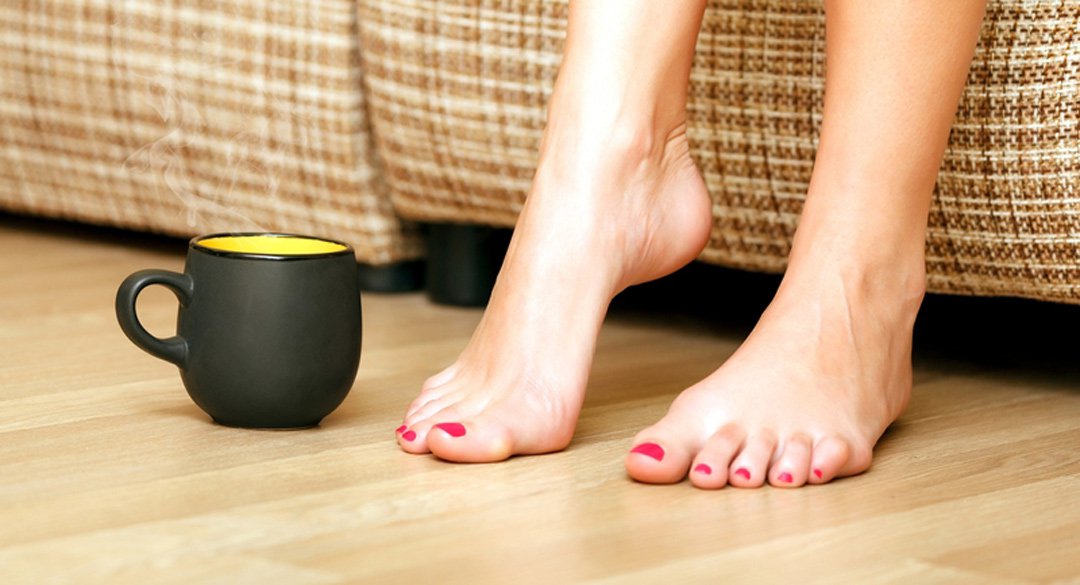Ask An Acupuncturist: 6 Ways to Reduce Period Pain

Do you dread your monthly cycle due to painful cramps? Many women suffer from painful periods, unaware of the effective natural remedies that can make their periods more comfortable. In my practice as an acupuncturist, I’ve seen many patients go from taking maximum doses of ibuprofen or acetaminophen during their periods to using little or none at all, just by implementing a few simple strategies.
From the perspective of Traditional Chinese Medicine, excessive menstrual pain is considered a condition of “stagnation.” Stagnation refers to a lack of energy (in this case, blood) flowing through an organ. With menstrual cramps, stagnation is thought to lodge in the lower abdomen and become irritated or activated when the body tries to start shedding tissue.You may wonder why you have to suffer through cramps in the first place. The explanation lies in the fact that your uterus must shed its natural lining each month–a job that requires your uterine muscle to contract. As it contracts, blood vessels that supply the uterus become constricted, which reduces blood flow and results in pain. For some women, the hormonal changes that trigger menstruation may be more pronounced, causing the uterus to contract overzealously–and more painfully.
To address the excess contraction and constriction that cause painful periods, try the following tips. The idea is to help regulate blood flow in the lower abdomen, normalize smooth muscle contraction, and reduce cramps. You can try them one at a time and see which approach works best for you, or you can try them all together to achieve maximum effect.
1. Supplement Yourself
Take calcium and magnesium supplements throughout the month, as these nutrients work in concert to aid muscle relaxation. You should aim for a total of about 1000mg of calcium daily, and up to 500mg of magnesium daily. If you experience loose stools, reduce the dose. (Note: we recommend you use calcium citrate, because it tends to be more easily absorbed into the system than calcium carbonate.)
2. Try a Tea
Raspberry leaf is considered to be a mild uterine tonic. Try a cup of raspberry leaf tea each day throughout the month. It is available at Whole Foods by the company Traditional Medicinals. Keep in mind you are looking for the herbal tea, not raspberry-flavored black tea!
3. Eat More Greens
Dark leafy greens are a dietary source of magnesium, calcium, and countless other micronutrients. These nutrients are essential for mediating muscle contractions. In Chinese dietary therapy, dark green vegetables are also considered to be mildly cleansing, which is what the body needs in a “stagnation” condition. Some greens such as dandelion greens (very bitter, but very helpful) also have a mild diuretic effect, which reduces bloating.
4. Cut Down on Coffee
Caffeine, especially from coffee, is a well-known vasoconstrictor – it makes blood vessels constrict. Indeed, it may cause the vessels that feed the uterus to tighten more than they do in non-coffee drinkers. If you’re a diehard coffee drinker and can’t cut it out entirely, try avoiding it just in the week before your period and see if you notice a change.
5. Use a Heating Pad
A heating pad or hot water bottle is a simple, tried and true way to reduce muscle spasms.
6. Try Acupuncture
Certain acupuncture points are thought to regulate blood flow through the abdominal cavity and relax the nervous system, which can help calm muscular contractions. Studies show that acupuncture is just as effective as over-the-counter anti-inflammatory medicines for reducing pain.
In addition to pain relief, don’t be surprised if these changes also lead to better digestion, better sleep, and a steadier mood. However, if these measures aren’t enough to improve your quality of life, an acupuncturist or naturopath can offer you further refinement of natural strategies.
Also, keep in mind that excessively painful menstruation can be a sign of a more serious underlying medical issue, such as endometriosis, a uterine infection, or a problem with the uterine anatomy. Don’t forget to consult your primary care provider to make sure these possibilities are addressed, especially if you just can’t seem to get your pain under control.
May you enjoy smoother cycles!
The One Medical blog is published by One Medical, a national, modern primary care practice pairing 24/7 virtual care services with inviting and convenient in-person care at over 100 locations across the U.S. One Medical is on a mission to transform health care for all through a human-centered, technology-powered approach to caring for people at every stage of life.
Any general advice posted on our blog, website, or app is for informational purposes only and is not intended to replace or substitute for any medical or other advice. 1Life Healthcare, Inc. and the One Medical entities make no representations or warranties and expressly disclaim any and all liability concerning any treatment, action by, or effect on any person following the general information offered or provided within or through the blog, website, or app. If you have specific concerns or a situation arises in which you require medical advice, you should consult with an appropriately trained and qualified medical services provider.